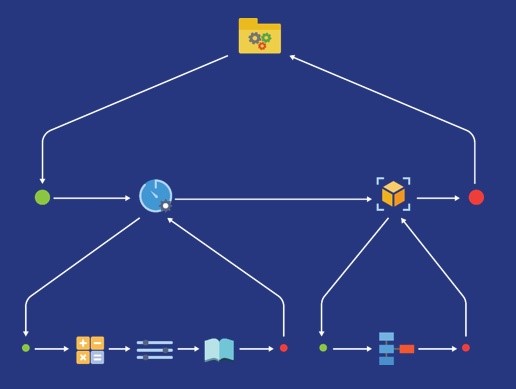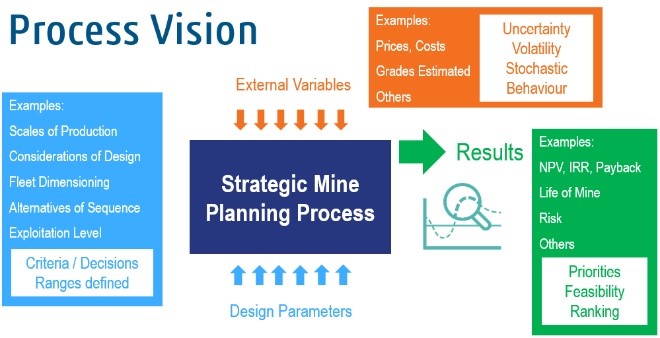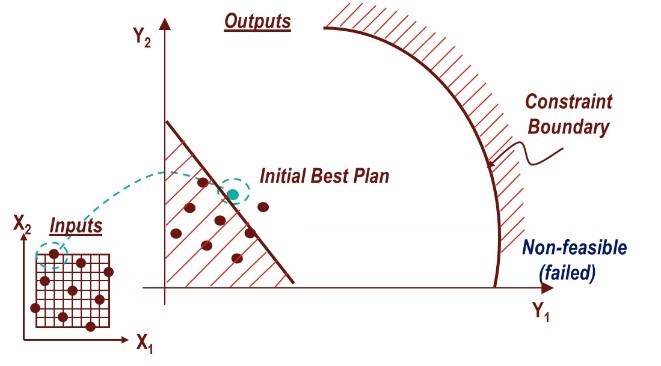Dassault Systèmes Strategic Mine Planning (SMP) process regularly demonstrates value improvements of 5% – 60% across a range of projects.
In this post, I explain to you some methods that are useful for us to achieve this improvement:
Strategic Mine Planning (SMP) is about solving complex problems to reconcile the maximization of value or some other corporate objective, together with the fulfillment of economic, operational, safety, and environmental restrictions. The traditional way of managing the planning process consists of executing some optimization cycles separately that considered these restrictions and allowed us to have scenarios that satisfy profitability requirements.
However, this way of working presents 2 inconveniences:
• no integration of the optimization stages
• no control over the parameters that would enable a better understanding of the effect of each variable on the results.
Just add limited time to carry out the exercise to that and we find ourselves with insufficient capacity for analysis and few scenarios to choose a better plan from.

Process composition figure
Dassault Systèmes has been working in recent years to make available to the mining industry a set of solutions that allow addressing the problem of strategic planning, both for open pit and for underground mining. A collaborative environment enables us to automate and model a process simulation workflow.
Those solutions integrate several GEOVIA tools such as Surpac, Whittle, MineSched, GEOVIA Footprint Finder, MS Excel, Scripts, or any executable software via command line.
To model the planning process, we must differentiate external variables from design parameters. External variables are entered as rigid inputs, and the planner has no control over their values: they may be deterministic values, or they may have a certain degree of uncertainty and/or variability over time.
On the other hand, the design parameters are key in the planner’s decision criteria as they define the ranges that sustain all the possible designs of our plan.

External variables, design parameters and results
A way to expand our possibilities, and make the best decision, is to open the ranges of design options. From there, we can evaluate the effect of each design parameter on the results of each simulation. That’s the Design of Experiments (DOE), which enables us to trade-off the available options and understand the solution space.

DoE figure
Most of the time, we do not know what is the effect on the results of the design variables (inputs), or we do not have an understanding of which inputs can be critical. The DOE allows us to establish an initial idea about what composition could be a possible “candidate” plan to choose.
The Design of Experiments (DOE) also has different ways of sampling the space of the inputs, with which we can visualize the influence of the design variables and choose the best scenario from a set of predefined configurations.

Optimization figure
Another way to find a “candidate” plan is to perform an Optimization. It will allow you to search for the scenario that best approximates our objective function within a workflow made up of various tools or processes.
However, it is common to find that the optimal “candidate” plan is not necessarily the best plan. That can happen due to both the complexity to model objective function, and the difficulty of reaching the optimum at reasonable times.

Optimal versus Robust
Besides, an optimal found may satisfy the restrictions and requirements of the objective function. Still, it can be in a neighborhood, very close to the “non-feasible”, where a slight variation of the inputs or a small change in the external variables (from uncertainty itself) can lead to a drop in value, placing it in a very fragile position.
The Monte Carlo Simulation function is available to model the uncertainty of the external variables. This function allows us to include statistical distributions of the inputs. As a result, we can have a better understanding of the behavior of the distribution of the results for each configuration, which in turn enables us to detect the robustness and reliability of the plans to choose. When we reduce the optimal strategy in a place within a band of known certainty, this means that we have now selected a plan that also has a predefined level of probability of compliance. In other words, we can achieve our plan and reach our published forecasts with more confidence.

Robust and reliable figure
The simulation of scenarios, the integration of the process, the optimization, and the incorporation of uncertainty is not a silver bullet. This solution still requires a good engineering solution. Proposes a workflow that considers the plan restrictions, a good definition with validated inputs and ranges, with good modeling of uncertainty. All this, together with the ability to automate and run hundreds or thousands of scenarios in a short time, completely changes the way we do the planning, thereby generating more robust and reliable plans.
______________________________________

